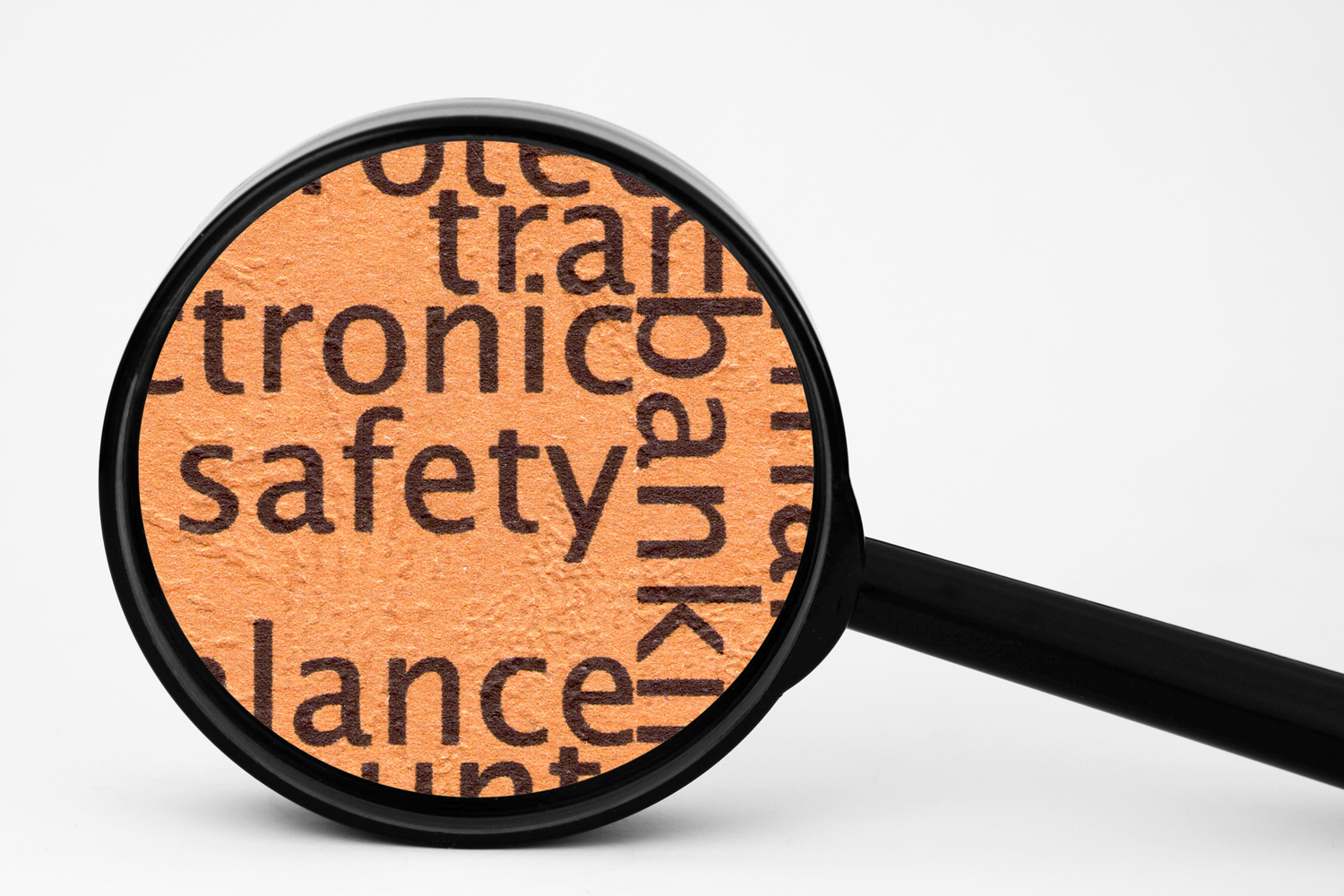Help, My Google Maps are Broken!
 Do you own a web site with an embedded Google Map? You may want to give it a look and make sure it’s still working correctly. Beginning on June 11, 2018, Google started requiring all websites to have a unique “API Key” and billing information on file in order to use their mapping service. This was not immediately apparent, but recently Google has started enforcing its new policy, resulting in an epidemic of broken maps littered across the web.
Do you own a web site with an embedded Google Map? You may want to give it a look and make sure it’s still working correctly. Beginning on June 11, 2018, Google started requiring all websites to have a unique “API Key” and billing information on file in order to use their mapping service. This was not immediately apparent, but recently Google has started enforcing its new policy, resulting in an epidemic of broken maps littered across the web.
It’s Not Free Anymore?
For most websites, it actually does remain effectively free – for now. Google’s new Map pricing structure grants up to $200 worth of free usage per month, per website. This is the equivalent of around 28,000 dynamic map loads. Keep in mind that advanced features such as turn-by-turn directions count as multiple loads. As such, highly interactive embedded maps may use more loads than you might expect. Still, unless the free threshold changes drastically, this new policy will only affect high-volume websites.
How Do I Fix It?
First, you will need a Google Cloud account (or enable Google Cloud in your existing Google account). Once in, you will need to create a new “Project” for your website and then follow the steps to set up Billing. Yes, you will need a credit or debit card on file with Google, even if it is never charged. Once billing is set up, Google will issue you an API key to use in your new Project. Be sure to protect this key.
Once you have your API key, integrating it into your map is the next step. This process will vary greatly depending on your specific situation. Some people use embedded maps as part of a plugin – in which case the key would be entered somewhere into the plugin’s settings. Others might need to enter it into their theme or content management system. For custom maps, the help of a developer may be required. Whatever your case may be, Appletree MediaWorks has the experience to get you on the right track – don’t hesitate to drop us a line if you’re stuck.
An Easier Way
If all you need is a simple area map with a single marked point – the most common sort of map found on Contact Us pages – you’re in luck! Even with Google’s new cost structure, it is still possible to use a simple “iframe”-based map completely free of charge and without an API key.
Simply point your browser at Google Maps and locate your business or point of interest. Click on the map where you want to add the flag. If your business is registered in Google Maps, you will be able to highlight it directly. When the side navigation pops up, use the Menu to select “Share or embed map”. From there, click “Embed a map” and copy the HTML it generates. This snippet of code can be placed anywhere you’d like the map to appear.
10 Best Affordable Tech Gift Ideas
Christmas is coming up quick. You may still have some last minute gifts to get for your “hard to buy for” friends and family. Here are ten of the best tech gifts of 2019 that are affordable and might make them happy.
-
Cable Straps
These are super helpful at keeping cords from getting tangled. These would be perfect for anyone who is always carrying around headphones (and always taking 3 minutes to untangle them after having them in their pocket), or anyone who carries around a phone or laptop charger everywhere they go.
-
Wireless Headphones
Rather than keeping wires untangled, why not just get rid of them? Wireless headphones are increasing in popularity due to Apple removing the headphone jack from its iPhone. If you don’t want to spend $160 for Apple’s Airpods, you could get your loved one these headphones for just $30! These would also be perfect for any gym-junkie or runners you may know.
-
Lens Kit
Expand the capabilities of almost any smartphone camera with these clip-on lenses. This is perfect for the person who dedicates 90% of their
phone storage to pictures. They can spice up their social media and take professional-looking pictures without needing a big camera. -
Portable Charger
Good for heavy users, this portable power bank claims to be able to hold 3 and a half times the charge of an iPhone 8. This is a good backup plan to keep your phone charged in the case of a power outage or anything like that. Anyone who travels a lot may find good uses for this as well.
-
Virtual Reality Headset
Turn almost any phone into an immersive virtual world experience with this headset. Compatible with smartphones ranging in size from 4.0 to 6.3 inches, this is a good gift for mobile gamers. A remote control is also included to enhance the gaming or video viewing experience.
-
Fire HD 8 Tablet
This tablet is good for anyone in search of casual browsing and/or reading, and even some light mobile gaming. It’s also only $50 right now. With this device, you can efficiently do all the essentials for a fraction of the price of other tablets. If you have a kid and you’re looking to invest in an electronic device to keep them occupied, Amazon’s Fire 7 Kids Edition is a fantastic option.
-
Bluetooth Tracker
Do you know somebody who is always losing their keys or phone? Or someone who is paranoid of forgetting their purse somewhere? Firstly, This tracker connects to your phone via Bluetooth. Through the app, you can locate the tracker on a map, and if it disconnects from your phone, you will be alerted. Secondly, you can use the tracker itself to locate a misplaced phone and make it ring.
-
Amazon Echo Dot
Right now, you can snag the 2nd generation Echo Dot for $20. Amazon describes the Dot as “a voice-controlled speaker that uses Alexa to play music, control smart home devices, make calls, answer questions, set timers and alarms, and more.” These things are nice when you’re cleaning the house or having a get together, or when you just don’t feel like moving from the couch.
-
SN30 Gamepad
Bust out the nostalgia cannon with this one. This controller mimics that of the SNES and adds analog sticks and rear buttons. It is completely compatible with Windows, Mac, Android, Steam, and even the Nintendo Switch. Make any classic gamer’s Christmas with this gift.
-
Dash Cam
Having a dash cam can seriously save you in tough situations. If an accident happens that isn’t your fault, this thing will have your back. On top of that, it can also monitor your car when it is parked and off. It will sense motion and begin recording if anyone or anything moves within view of the 170° camera lens.
Agreeing to the Terms of Internet Data Privacy Laws
Internet Data Privacy Laws for Website Owners
You’re probably tired of having to “Agree to Terms” to check out websites. Are you confused by the sudden increase of these kinds of popups on websites you’ve been visiting for years? New legislation is the reason for these boxes and notices.
Data privacy and security have become a priority for millions around the world. Accordingly, people are seeing the value inherent in their personal data. Because of this, users want greater control over where their data goes and who is handling it. This concern is not a conflated sense of paranoia, though. At least 16 high-profile data breaches were announced between January 2017 and April 2018 in the United States alone. The world is growing ever more connected through exchanged personal data. Because of this, parliaments and senates worldwide are considering ways to keep their citizens safe.
European Privacy Regulations: GDPR
Rewind to May of this year. Your email inbox was full of emails from retailers and media agencies communicating their compliance with the EU’s GDPR (General Data Privacy Rule). “That only applies to Europeans”, you probably thought. “Why does this matter to me?” The GDPR organizes and expands upon several prior data laws covering EU residents and companies. However, the boundaries of enforcement extend to all corners of the globe. Any firm or service that collects or handles the personal data of EU citizens is obliged to comply with this new standard, regardless of geographic boundary.
First, companies must seek the “freely given consent” before collecting data. Secondly, it’s crucial to clearly answer the questions of “How”, “Where”, and “Why” regarding data usage. With this in mind, it’s essential for companies to assess the ways they store, handle and process data to ensure responsible compliance. Services can’t follow in the footsteps of Equifax or Yahoo, who waited months to disclose news of massive intrusions. Specifically, GDPR requires notification following a breach within 72 hours from detection. Failing to abide these standards could result in massive penalties. Organizations at fault could even face private lawsuits brought by affected users in courts unsympathetic to risky data practices.
Data Protections – Coming to a State Near You
Let’s shift focus toward more familiar shores. As of July 2018, ten states are actively pursuing internet privacy regulations. Eleven further states have enacted or expanded legislation covering the data privacy rights of individuals. In particular, California stood out from the crowd of privacy movement states when it rolled out the California Consumer Privacy Act of 2018, or CaCPA. Similar in nature to GDPR, this new standard enters enforcement effective January 1, 2020.
“[The CaCP is]…a step forward, and it should be appreciated as a step forward when it’s been a long time since there were any steps.” – Dr. Aleecia McDonald, Professor of Public Policy and Internet Privacy at Stanford’s Center for Internet and Society, as quoted in The New York Times.
This push for data privacy is likely to move swiftly. Americans are increasingly appreciating the real-dollar value of their data and demanding companies – retailers, financial establishments and tech firms, especially – take steps to protect sensitive information. There is even a push to bring the “Internet of Things” under privacy rules. Such coverage would provide much needed protection against improper access or usage of the conversations you have within range of Alexa or other smart devices.
Your Business Liability
Companies hoping to avoid or ignore the need to revise data management and processing practices may be doing so at great risk. As a matter of fact, some website hosting companies are already threatening to remove non-compliant websites. No company is immune from this, either – Google and Facebook are facing $8.8 billion lawsuits for ignoring GDPR legislation. Experts nationwide anticipate that a wave of similar rules will soon arrive in the United States. In any case, if your business has a website and you store client information of any sort, you should give your liability and compliance priority.
Making your website GDPR compliant is fairly simple, though. A phone call or email to your website development company can get the ball rolling down the road of website data compliance, safeguarding your customers and your business.
Awareness and action are essential, but the steps you can take now are simple:
- Accountability: Have data management systems in place that you monitor closely.
- Purposes and Limitations: Explain the following to customers: The type of information you are collecting, How you will use it, Who you share personal data with, and How long you store data.
- Data Minimization: Think of it as rationing – don’t collect more data than you need or can safely store. Create a list of who has data access.
- Data Accuracy: Keep records as current as possible. Give users an easy way to request data erasure.
- Security & Integrity: Privacy-by-design systems limit access to a select number of authorized people. Notify users of which third parties also have access to their data.
- Storage Limits: Use software to encrypt and anonymize user information. Know where you store user data. Delete or discard data you no longer need or use.
- Lawful, Fair & Transparent: Provide contact information for users to request the review or removal of their information from your data systems.
Technology news can sometimes seem murky or confusing. We’d love to talk more if you have questions about digital data privacy laws, or want to know what steps to take to ensure your business and customers are protected.
[stylebox color=”red” icon=”delete” icon_size=”48″]Disclaimer: GDPR is broad in scope and compliance will vary greatly between organizations. This article should not be considered legal advice. This is informational only and aims to help bring you an awareness of GDPR. If you need legal advice after reading this article, please consult an attorney with your specific questions regarding GDPR. [/stylebox]
Mobile Friendly Websites Are A Must
Mobile Friendly Websites Are A Must
It’s official – internet traffic from mobile devices has surpassed traffic from desktop systems. That may or may not surprise you. If you need help suspending your doubt, simply open your mobile’s app library. You’ll soon notice that a vast number of apps rely on internet access to varying degrees. From social media platforms to workplace productivity applications, more and more of the global digital landscape is trending toward mobile-first usage. As this trend continues, ensuring your website is mobile friendly is more vital to your success than ever before.
Social Media And Mobile Traffic
Love it or hate it, social media has had a profound influence on the traffic shift from desktop to mobile. Two platforms – Facebook and YouTube – presently make up over 30% of mobile traffic. Though the day’s preferred platform is constantly in flux, people are spending more time on social media overall. Every major social media hub is geared toward mobile-first access. For example, have you ever tried using Instagram on a proper computer? Better yet, you’ll need a pile of good luck to send your next snap story from a computer, as SnapChat is mobile-exclusive as far as real usage is concerned. This increased attention on social media is impacting time spent on mobile devices. Meeting your customers where they spend time is common sense in the world of business marketing. Don’t focus on desktop tuning while your next customer is checking out the competition from their smart phone.
Similarly, social media has become a powerful tool for brand engagement and customer relations. Consumers expect the brands they support to be attuned to their needs and wants, and assume they can easily move between the digital places controlled by those brands. Part of that assumption is derived from the expectation that websites can be easily navigated on mobile devices. According to a 2016 study conducted by Google, 53% of mobile customers will abandon a website if it takes more than 3 seconds to load. Accordingly, this has a direct affect on a site’s bounce-rate and packs a punch when looking at search engine ranking results.
Mobile Online Buying and Selling
For e-commerce sites, mobile optimization is crucial to success. Large retailers like eBay and Amazon have even developed mobile apps to allow users to easily access every feature of their site! Seamless shopping allows customers to add an item to their cart on a desktop and complete the purchase from a hand held device. Mobile optimized sites streamline the purchase process and encourage shoppers to spend more. Nearly 8 in 10 mobile shoppers report spending more time and making more impulse buys on device friendly websites.
Trends to Consider for Mobile Friendly Sites in 2018
Beyond the numerous reasons to optimize your website for mobile, it is essential to understand how to make the most of it:
- Your text should be easily readable and simplified to target your customers. Zooming in to read long chunks of irrelevant copy will quickly exhaust a user’s patience.
- Consider how mobile users will interact with your website. Desktop and laptop users enjoy the luxury of mouse navigation. Mobile displays require large buttons and scrolling column layouts to allow for quick and easy exploration.
- Page load speed is crucial. Users expect immediate information from their mobile devices. Your customers will flee if your page takes more than 3 seconds to load.
- Photos and Images Should be Prominent and High-Quality. The images you use should be relative to your content and used sparingly. Images also attract and retain attention, so high-quality images are crucial.
Stop waiting to fine tune your website for mobile navigation – just do it!
Reach out to us today to learn more about making your website mobile-friendly.
Internet of Things: Conveniently Open (to attack)
The relentless goose step of technology over the past decades has lead to the eventual invasion of the microchip into almost every product in the first world. This has left many astute observers asking what unintended consequences we might be overlooking. As the IoT (Internet of Things) becomes more prevalent, security has taken a back seat to progress. We should be mindful of where this trend may lead.
Smart Devices Everywhere!
In a relatively short period of time, there has been an explosion of IoT devices entering the consumer facing marketplace. They have increasingly entered homes and infiltrated our daily lives. Techopedia defines these “Smart Devices” as electronic gadgets which are able to connect, share and interact with their user(s) and other smart devices. While interactive speakers such as Google’s Home or Amazon’s Echo come to mind, smart devices have a far wider reach. To complement these popular AI personalities, we are now seeing smart light switches, wall outlets, security cameras, and televisions. There are even smart ovens, refrigerators, toys, light bulbs, window blinds, scales, watches, wallets, and key rings – to name a few!
There is something inherently creepy about inviting an artificial personality into your home (I’m sorry, Dave). However, the real danger of these technologies comes as a consequence of how many of them were rushed to market. Manufacturers, seeing more profit from a quick entry had left any consideration for security in the waste bin throughout device development. As a result, the IoT has been left wide open to attack with virtually no barrier to entry. Once an attacker gains one foothold in a network, it is easy to pivot from there and grab control of everything connected to it. This includes every smart device and computer therein.
A House of Unlocked Doors
Is your smart coffee machine having problems? It could be because these connected brewers open up a non-encrypted hotspot every time you turn them on, making them easily compromised by hackers. Remember the KRACK vulnerability we wrote about nearly a year ago? Many printer manufacturers, including big names like HP and Brother, have since decided to do nothing to patch the vulnerability. This lack of response leaves most printers in the wild today wide open to attack. Most IoT devices are even further down the priority list. Manufacturers rarely see any economic benefit in patching them, or in building security into them from the beginning.
It is largely because of these lax standards that attackers have been specifically targeting IoT with their botnet attacks at an alarming rate. By infecting a few vulnerable devices across millions of homes, black hat hackers are able to amass multiple supercomputers worth of combined processing potential from the comfort of their homes. All of this power can then be utilized to unleash attacks, or to amass wealth from mining cryptocurrency at their victims’ combined expense (in the form of higher electricity bills). Researchers have noted that our power grid could actually be taken down by hackers taking control of “smart” appliances, that’s scary.
What Can Be Done?
At Appletree MediaWorks, we always take a proactive approach to information security – our clients depend on it. Given the state of devices on the market today, we recommend doing some research before purchasing any new smart device. It only takes a minute to search “Device Model” vulnerabilities in Google, but it could save a lot of pain down the road. Furthermore, as companies begin taking security seriously, it will pay dividends to support the responsible ones with your purchasing power.
Already have a bunch of devices? There are still several steps you can take:
- Create a separate network for IoT devices
Many new Wi-Fi routers support guest networks. Set this up with a different password from the one you connect your computers to. Then make sure your IoT devices only connect to the guest network. This step will help to isolate your data from some of the worst security holes. - Disable UPnP
If your devices support Universal Plug and Play, disable it. This is a convenient feature for easily connecting to networks, but it is also highly insecure. Not worth the risk. - Keep firmware up to date
Even though manufacturers aren’t always quick enough in reacting to threats, it is still good to keep your devices current. This gives you the best possible chance against emerging threats. Make sure that updating device firmware is part of your regular routine. - Use good passwords
Furthermore, every device on your network should have a unique password. This will limit the damage in case an attacker does manage to get in. - Don’t connect anything you don’t need connected
Okay, so the new fridge can send you text alerts when you run out of eggs. But do you need text alerts like this? Do you mind someone in Russia also knowing that you’re out of eggs? What if they decide to turn on your oven while you’re away at work? - Turn off Bluetooth when not in use
This prevents other nearby bluetooth devices from pairing with yours and stealing data. It also has the added benefit of preserving battery life.
Wolverine Machine
WordPress Developed Website for Wolverine Machine
Integrating Internet Design and E-Commerce
Wolverine Machine was a complete website redesign and overhaul. The previous website was outdated, hard to maintain and not mobile friendly. The old site had a great amount of content in need of organization. WordPress was used as the CMS for the new developed website because of its flexibility and extensive plugin library.
The new website incorporates a custom designed, responsive and mobile friendly WordPress theme. The new user interface makes it easy for visitors to find information about the services they would like performed and also see images of completed projects.
Site Features Include:
Video Editing, Designing and Programming a Rotating 3D Logo using Blender, Mobile Friendly, Video Sliders, SSL Installation, Integrating a Chat Feature Tawk.to, Inline Contact Forms, Automated Contact Database, YouTube Integration, Newsletter Signup, Social Media Integration, Custom Theme, Tickers, Anti-Hacking Tools, Content Writing, Graphic Design, Plugin Installation, Interactive Graphics, Google Analytics Visitor Reporting, Blog, Responsive CSS, WooCommerce Shopping Cart, YouTube Integration, and Custom Programming.
Help Alexa and Siri Find Your Business During Voice Search
You Can’t Just Tell Voice Search About Your Business
Voice search is when a human tells Alexa or Siri or another voice activated device to go on the internet and look for an item or information rather than typing their query into a search engine browser themselves.
“As far back as 2014, Google’s official blog reported that 55 percent of teens and 41 percent of adults in the U.S. were already surfing the Web with voice search. Now, Google predicts that half of all search traffic will use voice search by 2020.” – Website Magazine.
This is great for Google, Apple and Amazon, but it also means websites need to be sure their search engine optimization is prepared for voice search.
Long Tail Search Keywords
People tend to talk naturally to their devices, generally they are asking a question, contrary to just typing in a few keywords and a city to find results traditionally. This is known as “long tail search terms” versus “keyword terms”.
Example:
Voice Search: “Okay Google, find a union printer near me”
Google Web Browser: “Union Printer Pittsburgh”
Local Search Optimization
Mobile device searches frequently are for services or products “Near Me” so it’s vital that your local listings are up to date and fully optimized. The big directory sites are also starting to be sources for the voice search engines, so make sure your listings are accurate and up to date on the credible directory sites.
Online Reviews
Siri wants to send users to the best rated organizations near their users. This means online reviews are vital to help your site be the answer Siri gives, rather than your competitor.
Mobile Optimized
Google started penalizing website that were not search engine optimized a few years ago. We still have unions and organizations coming to us to get their old websites up to 2018 standards so their website loads quickly and is responsive on devices. If someone is on the move doing a mobile search they are not going to wait for heavy images or files to load on your website.
Alexa, Where’s My Business?
When we launch a new website for a client or perform SEO services our packages include submitting the websites to the biggest search engines our list, that list includes making sure Alexa and Siri have the information and tracking codes they need to find the website.











